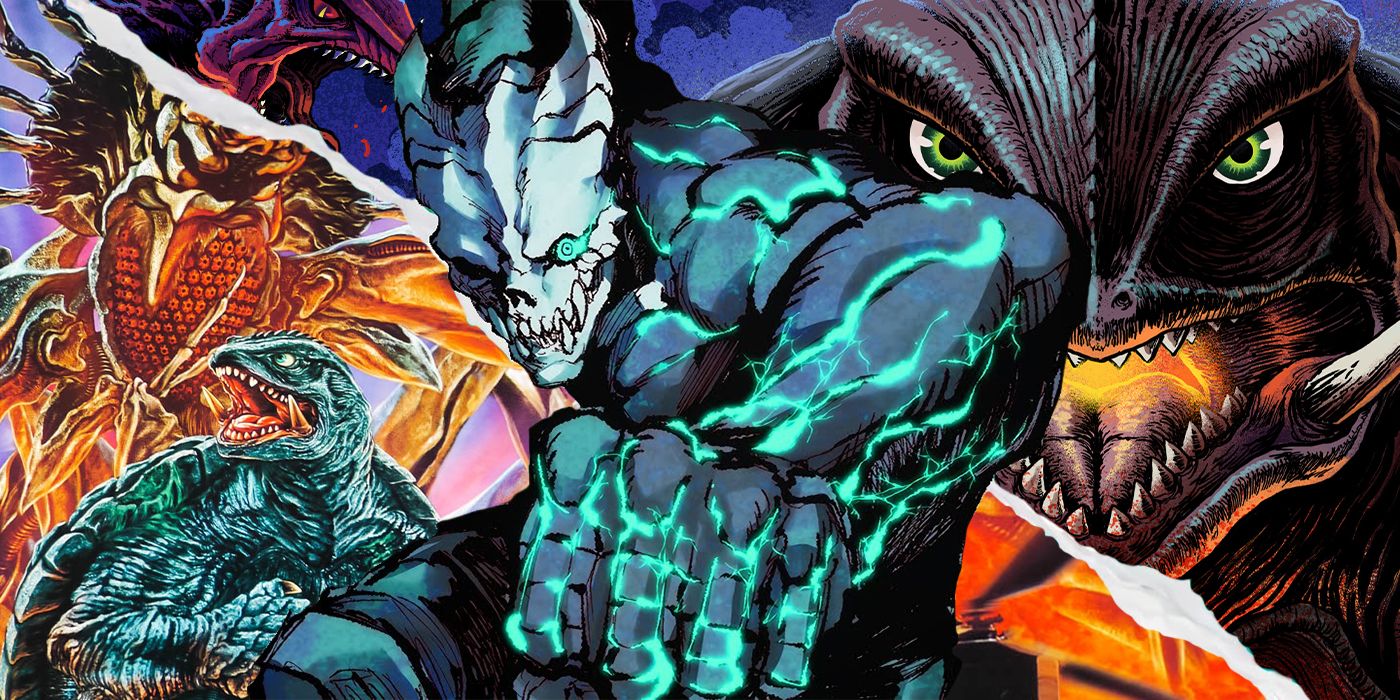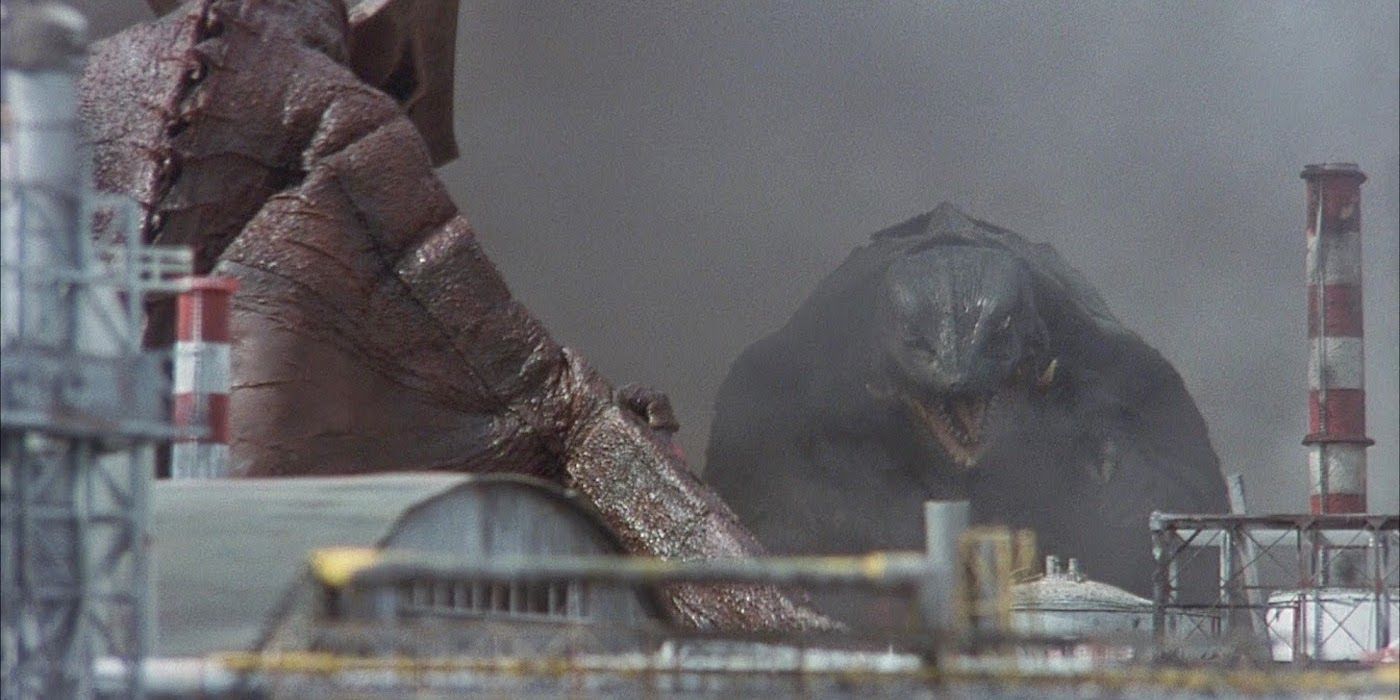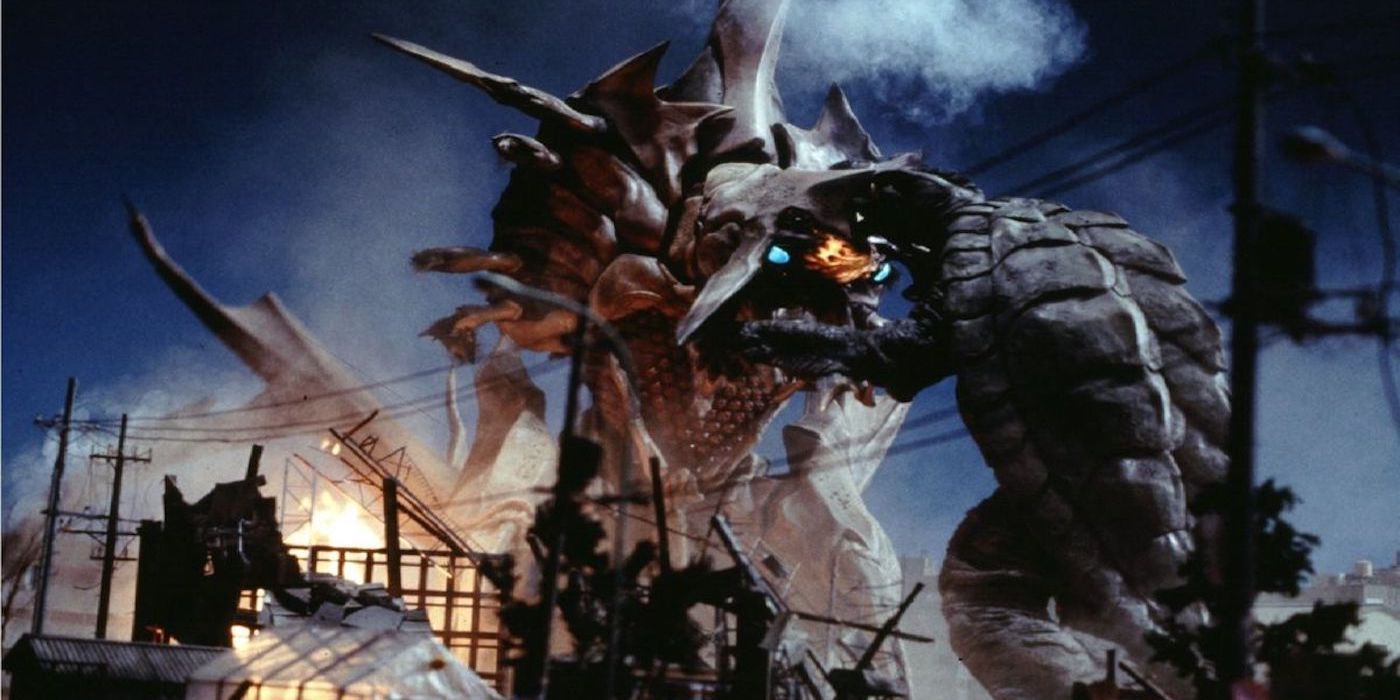It could have been that the Gamera franchise never became more than a cheap Godzilla knock-off, a one-and-done B movie perpetually living in the shadow of its bigger, far more successful predecessor. What began as a frenzied attempt by Toei Studios to capitalize off the monstrous success of the Godzilla franchise quickly became something else. The Gamera films were sillier than their kaiju counterparts, featuring somehow even less coherent plots that tended to feature children protagonists rescued by Gamera from city-destroying space monsters. After all, Gamera was known as “a friend to all children." While these endearingly goofy men-in-rubber-suit monster flicks had their own undeniable appeal, they were mostly inferior to those in the Godzilla series, with Mystery Science Theater 3000 even poking fun at a number of the films. All of which isn’t to completely dismiss the Showa-era movies as being unworthy of your time—kaiju fans should certainly check them out—but they’d probably be better off skimming for only the essentials.
Given the general mediocrity of these early films, it’s surprising that when the series was rebooted by Shusuke Kaneko in 1995 with Gamera: Guardian of the Universe that the result was, well, actually quite good. Released in time for the 30th anniversary of the original film, the remake features a plot in line with what could be expected from the previous entries in the franchise, yet it distinguishes itself from the others stylistically and thematically, setting a much grittier, somber tone. The stakes are higher, and the action, even if inherently preposterous by the very nature of its premise, feels somehow more real. Even if this remake uses the template of its source, it essentially builds everything from the ground up, scrapping just about every trait and trading each for something far more mature.
The films’ success in this transition from cartoonish to somber can be attributed to a number of its characteristics. They create a dark atmosphere, literally dark, in which colors are muted in favor of dim tones, casting the mood into an inescapable melancholy. They also create a world of fantastic creatures and ancient, magical runes, with a matter-of-fact sincerity that’s always played completely straight. The special effects, often an Achilles’ heel in the believability of films of its ilk, were, and still are to a large degree, considerably impressive. Of course, as with most films of a bygone technological era, there are moments when the act of movie-making is apparent. Certain effects are clearly just effects, but never are they dated enough to lessen their impact. Practical effects including animatronics, intricately-detailed monster suits, and controlled explosions, are favored over the conservatively-used CGI effects.
Of course, it helps that the films featured special effects direction by Shinji Higuchi, who would go on to co-direct one of the most acclaimed Godzilla films of all time, Shin Godzilla, in 2016. With an apparent knack for creating grandiose effects that are equally awe-striking and horrific, Higuchi sets up enough city-wide destruction and towering monster brawls to satisfy any fan of the genre. These scenes satiate that hunger for an unbelievable spectacle, but they adhere to the film’s established gritty tone to create battles whose results matter.
Apart from the obvious improvement of special effects between the two eras, the Heisei-era trilogy also featured significantly improved creature designs. The monsters were bigger, badder, and inevitably scarier. They became something that one could actually fathom being afraid of, rather than what one could expect to see on a children’s television program. Gamera: Guardian of the Universe, borrows a primary antagonist, Gyaos, from a film in the Showa era, and it accomplishes the task of reinventing the monster into something sinister, intimidating. Fans of the early films know this is no easy feat. Gamera 2: Attack of Legion and Gamera 3: Revenge of Iris creates entirely new monsters for Gamera to fight, and each sequel ups the ante by improving on the formidability of the kaiju featured in the previous film.
A major problem that always plagued the Gamera franchise and put it perpetually behind its quite inarguably superior counterparts of the Godzilla films is its lack of memorable monster design. While the Godzilla films had Mothra, Ghidorah, and Mechagodzilla, the Gamera series failed to create equally effective antagonists. Fortunately for fans of the genre, the Heisei-era Gamera trilogy at long last crafts intriguing creatures that you will actually remember post-credits.
Not only do the films still look good, but they also managed to create an emotional resonance unparalleled by others in their genre. Here are kaiju films that accomplish the nearly impossible task of balancing city-destroying monster combat with the inevitable human-based plot lines. Characters are given actual personalities, motivations, and legitimate emotions. While each film mostly features a new cast of human characters, they also find a recurring narrative thread in the continuous appearance of Asagi (Ayako Fujitani), a young girl who forms a deep spiritual bond with Gamera. What spreads across the entirety of the trilogy is one of the most emotionally rewarding plotlines in any monster film. With Asagi’s spiritual connection to Gamera serving as an ingenious method for allowing the viewer to further empathize with the giant turtle, our beloved kaiju becomes not just a creature but a character of his own. He is something worth empathizing with, understanding, cheering for, a hero figure to praise.
There is also an impressive amount of consistency in this trilogy, with little-to-no misstep in quality. The first film establishes the world, and the latter two continue to build upon it, willing to indulge new ideas but careful to never stray too far from what made the first work. The final installment in film trilogies are so often plagued to be the worst of the three — and usually by a significant margin — but Revenge of Iris makes a convincing argument for being the strongest not only of the narrative trilogy to which it belongs but of the entire Gamera franchise.
Revenge of Iris wraps up the trilogy by contemplating the often-neglected question of mass casualties as collateral damage. In practically any of these monster films, buildings crumble, trains are upturned, and cars are crushed like insects. What about the people in all of this? If most in the genre treat these nameless, faceless deaths as generally inconsequential, the final act in the Gamera trilogy studies the lasting effects they have on the survivors. Ayana (Ai Maeda) is a grieving young girl who struggles with the trauma of her parents having been unintentionally killed in Gamera’s battle in the first film. The hatred she forms for the turtle soon transfers to Iris, a monster she discovers in a cave and names after her dead cat, and the emotional bond sets off a series of catastrophic consequences.
The Heisei-era Gamera trilogy stands heads above others in the genre largely due to its ability to focus on the emotions of these films. Even when recognizing the typical emotional limitations creating large, monster-centered action films, each entry in the trilogy finds a way to make what happens matter. It’s hard not to care about Gamera or Asagi, and when Ayana takes a vow of vengeance against the much-beloved turtle, it’s easy to understand why. It’s a terrific accomplishment not to overlook.
In a slam-dunk of monster movie-making, Higuchi and Kaneko managed to resurrect a long-dead franchise and completely reinvent it. The result is something spectacular: a lean trilogy of kaiju films that have not only aged particularly well, but have also proven to be some of the most crucial movies in the history of the genre. At long last, the proper affection is given to a far too frequently overlooked cinematic icon: Gamera, a friend to all the children, the guardian of the universe, a kaiju for all to cherish.



